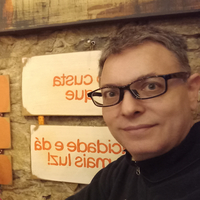
2023-11-09-carol cavaneghi2.png

2023-11-09-carol cavaneghi.png

Inteligência Artificial e criação autoral
Nessa conversa, Carol Cavenaghi comenta seu processo de criação autoral com IA, NFT, Blockchain, e Web 3.0, relacionando-os ao design multifacetado.

Como medir um corpo trans. A antropometria como ferramenta cisheteronormativa
O objetivo desta pesquisa é investigar produções antropométricas a fim de perceber a relação de representações métricas e sua relação com os corpos dissidentes, e a partir de um olhar queerizado, propor revisões discursivas e das formas de representação gráfica dos corpos que possibilitem olhar para além da lente binária biológica homem- mulher.



Travecometodologia

cultura maker

Cultura maker

Cassiane Patzlaff

Notas da prova de arguição oral Doutorado.pdf

Notas da prova de arguição oral Mestrado.pdf

carnaval

pornografia

estudos de gênero e sexualidade

2023-10-18-visita int7.png

2023-10-18-visita int2.png

2023-10-18-visita int3.png

2023-10-18-visita int4.png

2023-10-18-visita int5.png

2023-10-18-visita int6.png

Visita da turma de Modelagem Digital ao INT
Alunos da turma de Modelagem Digital fazem uma visita técnica ao Instituto Nacional de Tecnologia (INT).

Laboratório de Modelagem e Prototipagem
O Laboratório de Prototipagem da ESDI está equipado com uma impressora 3D FDM, um scanner 3D de luz estruturada, uma fresa CNC Roland 650 para materiais não-metálicos, uma fresa CNC Knuth de medio porte para metais, uma corte a laser, um torno de precisão, uma máquina de conformação a vácuo e uma máquina de corte, dobra e calandragem de chapas metálicas. É neste laboratório que são desenvolvidos projetos mais avançados de prototipagem e modelagem de várias disciplinas do curso de graduação em Desenho Industrial da ESDI. O laboratório também faz estudos sobre novas técnicas de prototipagem e desenvolve seus próprios equipamentos, dentre os quais pode-se citar um acessório para transformar uma fresa CNC em uma impressora 3D FDM.


Influências da transformação digital no design de experiência do empregado: um estudo de caso na Petrobrás
Defesa de dissertação de Felipe Marra no Programa de Pós-Graduação em Design

Studio Makers - Estágio
A Makers Manufatura abriu uma nova chamada para estágio. Vaga para estudantes de design a partir do 4º período.